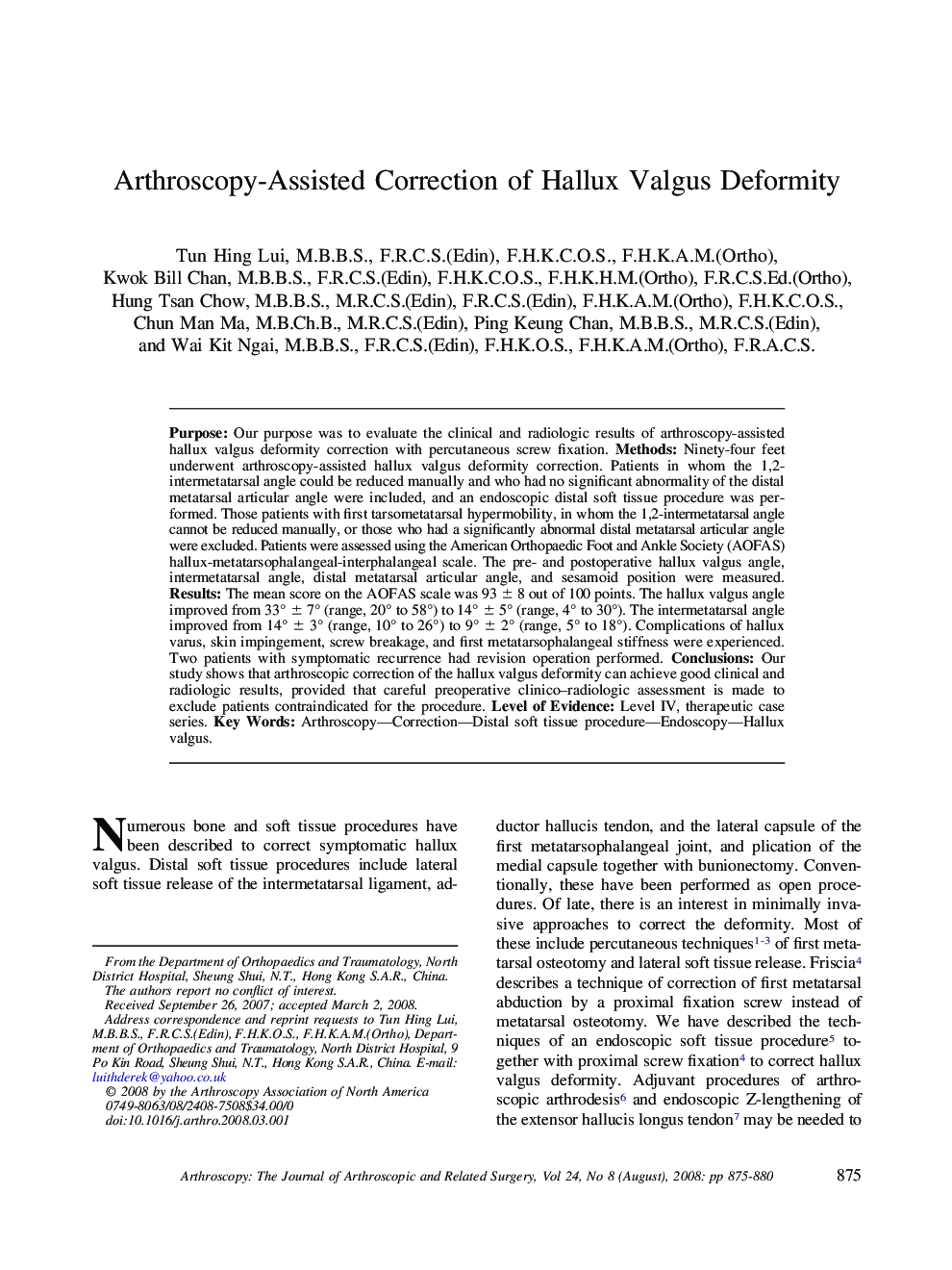| Article ID | Journal | Published Year | Pages | File Type |
|---|---|---|---|---|
| 4047130 | Arthroscopy: The Journal of Arthroscopic & Related Surgery | 2008 | 6 Pages |
Purpose: Our purpose was to evaluate the clinical and radiologic results of arthroscopy-assisted hallux valgus deformity correction with percutaneous screw fixation. Methods: Ninety-four feet underwent arthroscopy-assisted hallux valgus deformity correction. Patients in whom the 1,2-intermetatarsal angle could be reduced manually and who had no significant abnormality of the distal metatarsal articular angle were included, and an endoscopic distal soft tissue procedure was performed. Those patients with first tarsometatarsal hypermobility, in whom the 1,2-intermetatarsal angle cannot be reduced manually, or those who had a significantly abnormal distal metatarsal articular angle were excluded. Patients were assessed using the American Orthopaedic Foot and Ankle Society (AOFAS) hallux-metatarsophalangeal-interphalangeal scale. The pre- and postoperative hallux valgus angle, intermetatarsal angle, distal metatarsal articular angle, and sesamoid position were measured. Results: The mean score on the AOFAS scale was 93 ± 8 out of 100 points. The hallux valgus angle improved from 33° ± 7° (range, 20° to 58°) to 14° ± 5° (range, 4° to 30°). The intermetatarsal angle improved from 14° ± 3° (range, 10° to 26°) to 9° ± 2° (range, 5° to 18°). Complications of hallux varus, skin impingement, screw breakage, and first metatarsophalangeal stiffness were experienced. Two patients with symptomatic recurrence had revision operation performed. Conclusions: Our study shows that arthroscopic correction of the hallux valgus deformity can achieve good clinical and radiologic results, provided that careful preoperative clinico–radiologic assessment is made to exclude patients contraindicated for the procedure. Level of Evidence: Level IV, therapeutic case series.
